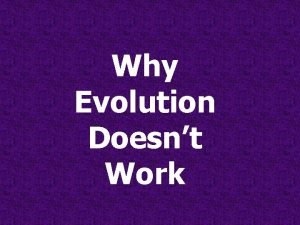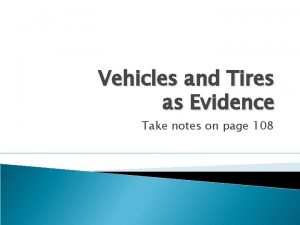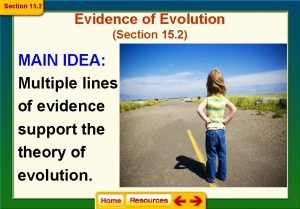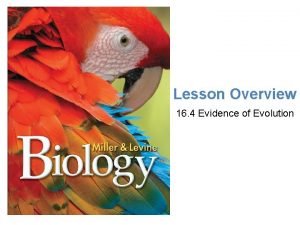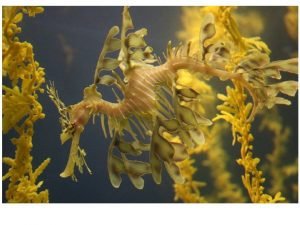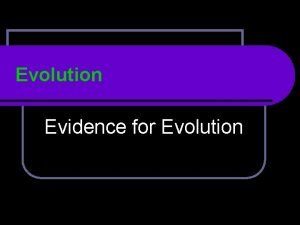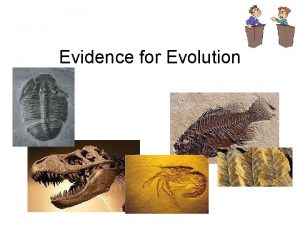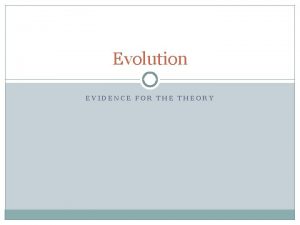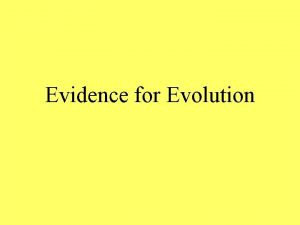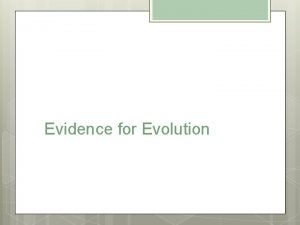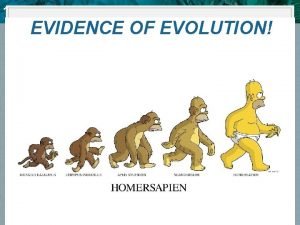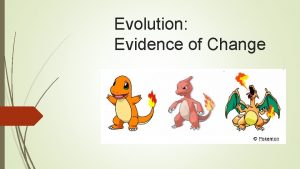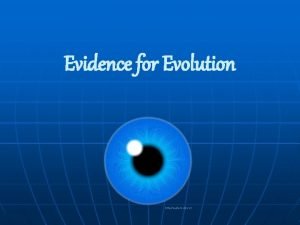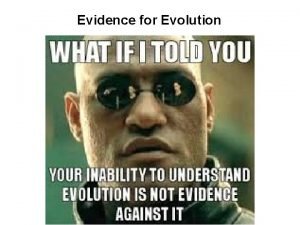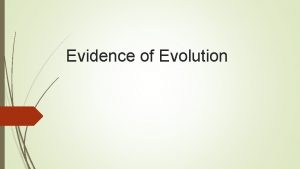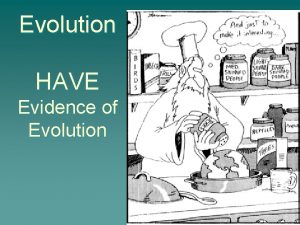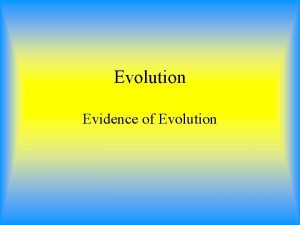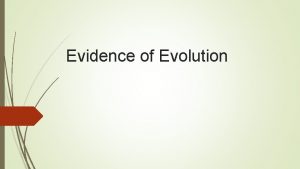Evolution WHAT IS THEORY OF EVOLUTION WHAT EVIDENCE















- Slides: 15

Evolution WHAT IS THEORY OF EVOLUTION & WHAT EVIDENCE SUPPORTS THEORY

THE THEORY OF EVOLUTION Evolution: The process of gradual (slow) change over time All species on earth evolved from a common ancestor Simple life forms evolve into more complex ones

4 WAYS TO STUDY EVOLUTION: 1. Geologic Record (Fossils) 2. Comparative Anatomy 3. Comparative Embryology 4. Comparative Biochemistry (DNA)

1) Geologic Record Earth’s “Timeline” Earth is 4 -5 Billion years old! Fossils: preserved remains of an organism that indicate how long ago it existed Carbon Dating tells the age of a fossil Layer of rock indicates age of fossil (lower in rock layers = older fossils) Age of Earth


2) Comparative Anatomy = body structure of an organism Homologous Structures: similar in structure; different in function. Example: Arm of Human & Flipper of Seal Analogous Structures: similar in function; different in structure. Example: Wing of Bird & Wing of Bee




Q: Which limbs represent homologous structures? Q: Which limbs represent analogous structures?

3) Comparative Embryology = study of embryos (developing babies) Similarities between embryos proves a common ancestor The later in development the embryos are similar = the more closely related the organisms are

Q: What evidence suggests that all 4 organisms have a common ancestor? Q: Which organism is the Turtle MOST CLOSELY RELATED to? How do you know?

4) Comparative Biochemistry (DNA) Comparing the chemicals that make up an organism, especially their DNA. More similarities in DNA = more closely related Human DNA A-G-G-C-A-T-A-A-A-C-C-G-A-T-T-A Chimpanzee DNA A-G-G-C-C-T-T-C-C-A-A-C-C-G-A-T-T-A Gorilla DNA A-G-G-C-C-T-T-C-C-A-A-C-C-A-G-G-T-A

Which do you think is the most important/most accurate? 1. Geologic Record (Fossils) 2. Comparative Anatomy 3. Comparative Embryology 4. Comparative Biochemistry (DNA)

COMPARING THE DNA IS THE MOST ACCURATE WAY TO SHOW EVOLUTIONARY RELATIONSHIPS
 Primary evidence vs secondary evidence
Primary evidence vs secondary evidence Primary evidence vs secondary evidence
Primary evidence vs secondary evidence Secondary sources
Secondary sources Primary evidence vs secondary evidence
Primary evidence vs secondary evidence Jobs vancouver
Jobs vancouver Are fibers class evidence
Are fibers class evidence Class evidence vs individual evidence
Class evidence vs individual evidence Class evidence can have probative value.
Class evidence can have probative value. Class and individual evidence
Class and individual evidence Red herring fallacy
Red herring fallacy Evidence of evolution
Evidence of evolution Evidence for evolution doodle notes
Evidence for evolution doodle notes Section 15-2 review evidence of evolution answer key
Section 15-2 review evidence of evolution answer key Tiger adaptations
Tiger adaptations Molecular biology evidence of evolution
Molecular biology evidence of evolution Developmental homologies
Developmental homologies










